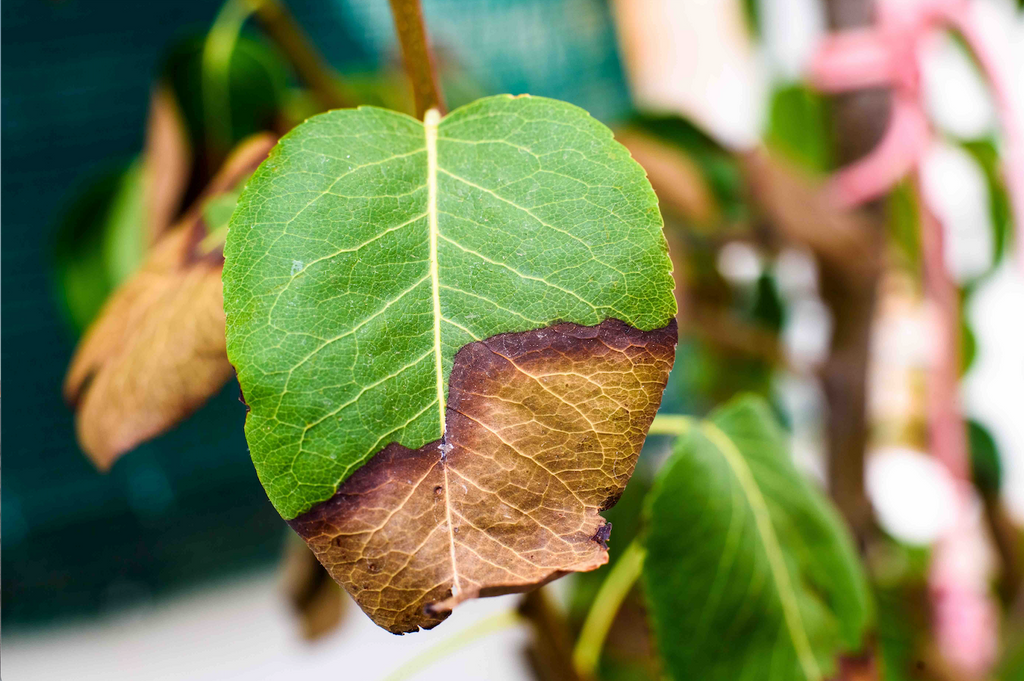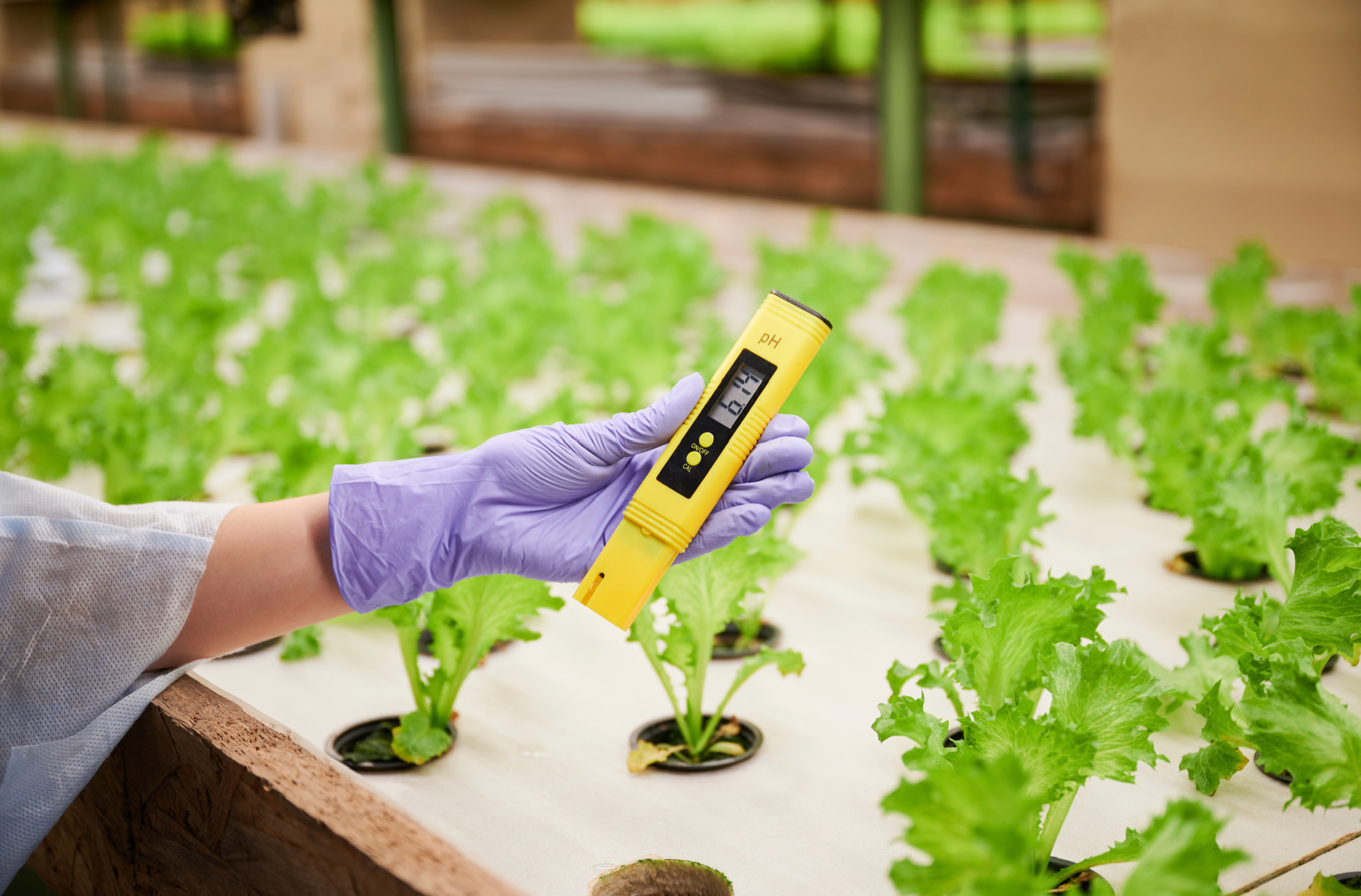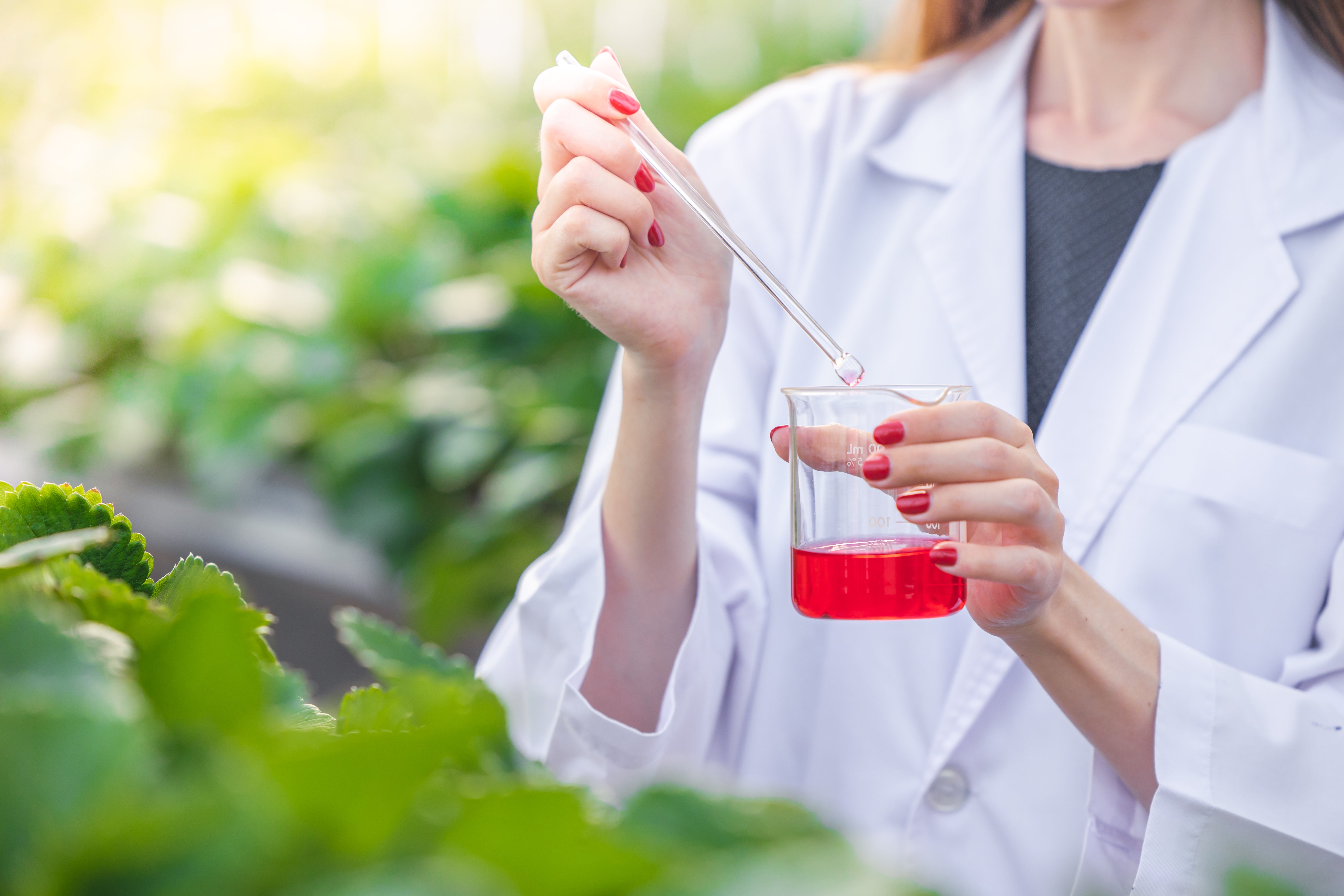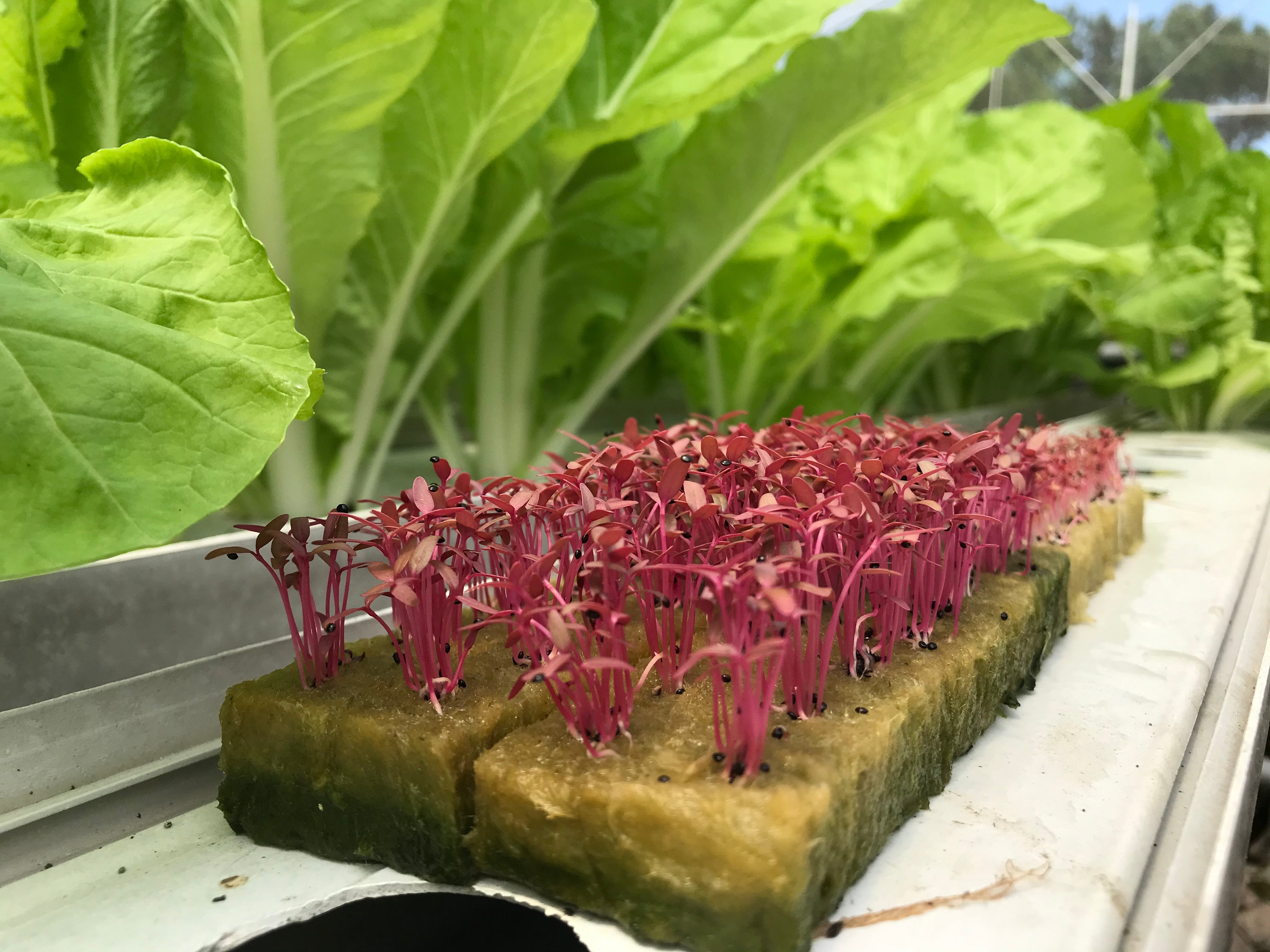Common Problems in Hydroponics
Troubleshooting Common Problems in Hydroponics
This article is intended to be a one-stop-shop for troubleshooting common problems in hydroponics. You can learn from mistakes, and although that’s not the easy way, it’s a valuable lesson that you learn to not repeat in the future. Because I have made mistakes, I want to share these with you so that you can avoid them from the offset and not have to learn things the hard way. I’d like you to get all of the benefits and positives of hydroponics while avoiding mistakes and preventing common problems.
Algae Growth
While algae doesn’t cause too many issues on its own, having algae can cause major problems in hydroponics. It can build up and cling to any surface as well as invite pests like gnats or the growth of fungus.
There are things you can do to prevent algae from forming. The most effective way is preventing sunlight from reaching the nutrient solution and growing medium. Algae need the same things as plants to grow: water, light, air, and nutrients. Obviously, you can’t remove water, air, and nutrients from your system; however, you can stop light from reaching the nutrient solution and growing medium. If there is no sunlight, algae can’t grow. All parts of the system that house the nutrient solution need to be black or opaque to prevent light from reaching the liquid. This will not eliminate all algae growth, but it can minimize it. Complete prevention is unrealistic, and you may still get small amounts of algae, such as on drippers or emitters.
When cleaning your system, it’s important to give your grow room a good clean too because algae spores can be moved around by air. They can land on a surface where they can’t grow, such as walls or grow lights, and later on they can be moved back into the water through the air and start a new infestation of algae. There will be little benefit in cleaning your system if there are algae spores lurking on the walls or grow lights.
You need to give everything that comes into direct contact with your system a thorough cleaning. You need to clean the grow room from the top towards the bottom to avoid any dust falling on clean surfaces. Make sure to clean everything: grow lights, walls, work surfaces, and electrical area. Any items used around the garden will need to be cleaned thoroughly or replaced. Remember to clean or replace air intake filters if your system has them.
Next, you need to clean your hydroponic system. Start by draining it like you would with a regular routine cleaning. You’ll need to make a cleaning solution that you will clean your system with. You can use food grade (35%) hydrogen peroxide or bleach. For hydrogen peroxide, mix it with water in 1:11 ratio. Bleach should be mixed at a 1:100 ratio. This is approximately 10 ml per liter of water (or 1.3 oz per gallon of water). Bleach needs to be unscented so that no chemicals are left behind in the system.
Use the cleaning solution and give your system a really good scrub, especially all surfaces that show any signs of algae growing. Next, you will need to fill your system with a hydrogen peroxide or bleach cleaning solution. For hydrogen peroxide, add 1 ml per liter of water (or 3 ml per gallon of water). For bleach, add 10 ml of bleach per liter of water (or 1.3 oz of bleach per gallon of water). Fill it to a higher level than usual so that the line where algae were forming is covered. Run the system for 4–6 hours.
Next, you need to drain the cleaning solution from the system. Flush your system with fresh, clean water, and make sure to remove all the debris. If you used a bleach cleaning solution, you will need to flush your system with water 2–3 times to remove all traces. Once the system has been rinsed and flushed, drain the water. Wipe down the tank and all accessible areas with clean towels. Do not use those that were exposed to algae.
You only need to clean your system from algae after each harvest. You can also clean algae from your system by using copper sulfate or potassium permanganates, which both act as an algaecide.
Big Plants
If your plants have grown too big too quickly, this could be due to how much light you are giving your plants. If your plants are on 18 hours of light per day, you should try moving them down to 12–14 hours of light per day. You can note this in your log or journal and learn from it for the future.
It may also be due to the genetics of your plant. Is it typically suited for indoor growing? You can sometimes use the SCROG (Screen of Green) growing method, which is where you put nets over the top of plants to control their height and create an even canopy. If the environment is too hot, this can cause plants to become overactive sometimes.

Burnt Leaf Tips
If the tips of your plants’ leaves look burnt (dark brown or black), then it could be that your nutrient solution concentration is too strong. Another cause of this could be salts that have collected around the roots of your plants. The solution to this problem is to flush your hydroponic system with pH adjusted water or a weak nutrient solution. You could also reduce the amount of nutrients in your nutrient solution to half its usual strength.
Plants take up water (which is why you have to top up your reservoir every 2–3 days or even daily sometimes), and salts from nutrients build up over time. If your reservoir is too small, this means salt build up will happen faster. The volume of your nutrient tank should not be decreasing by more than 20% per day. If it does, this means your reservoir is too small, and you should get a larger one or reduce the number of plants you’re growing.
Tip burn can also happen due to calcium deficiency. You can try reducing the amount of nitrogen your plants get and see if it helps. You can also give your plants a calcium supplement.
Curling Leaves
If your plants’ leaves are curling up, this can be due to pH levels being wrong, and it can also indicate there is a nutrient deficiency, typically calcium. If your pH is wrong, it can prevent your plants from taking up the nutrients they need. So, it is worth checking your pH and EC levels daily to ensure that your plants are getting all the nutrients they require. If your leaves are curling under, this could mean your plants have an excess of nutrients, or it could relate to a deficiency, so once again check the pH and EC levels.
Flower Offshoots
If your flowers have offshoots, this could be because your plants aren’t getting enough darkness within a 24-hour period, so you could try reducing the number of hours of light they get. Hot temperatures can also cause flower offshoots, so cooling down your grow room could help.
Interveinal Chlorosis
Plants absorb light and water from their leaves. If leaves do not contain enough chlorophyll, then they can become yellow or white—this is known as chlorosis. If the plant tissue dies entirely, then this is necrosis. Chlorosis can occur due to pests or microbes attacking plants or a nutrient deficiency. If the leaves turn yellow but the veins stay green, this is called interveinal chlorosis, and it is typically due to iron deficiency. This can be resolved by keeping the pH level of your nutrient solution within the recommended range of 5.5–6.5 and adding an iron supplement to it. If there is chlorosis on older leaves of your plant, this can be due to a lack of nitrogen.
Keep a Journal/Log
This piece of advice will always be repeated, but it's really valuable. Hydroponic gardening is very sensitive to the most subtle changes, and it’s great to learn from this so that you can repeat what went well and avoid repeating mistakes if things didn’t go so well. You can make notes, and you can also take pictures. It is well worth taking the time to analyse patterns within your data regarding the changes you have made and what this resulted in so that you can learn from this for your future hydroponic crops.
Lack of Oxygen
If there is a lack of oxygen in your reservoir or around the roots of plants, the roots won’t get enough aeration, and this can mean that anaerobic bacteria will grow and algae will form. There is a simple solution to this, which is providing more aeration by purchasing some air stones and air pumps to inject oxygen into the system.
Leaks in Your System
Leaks can occur within your system, and you need to be on the lookout for them. Look for your nutrient solution draining much faster than normal. Look for puddles of water on the floor. Listen for any unexpected dripping noises. If you think you may have a leak but you aren’t sure where it is coming from, purchasing light blue paper towels can help you find them quicker, as any wetness really shows up on them as dark blue. So, you can place them under pipes or wipe under pipes to determine where the leak is coming from.
If you think you have a leak, definitely look at areas in your hydroponic system such as joints and valves, as these can be common areas where leaks occur. Sometimes a leak could happen if roots and debris have clogged up the system, which creates a sort of “dam” that causes water to build up and overflow. Also, if your reservoir isn’t big enough to hold all of the nutrient solution that is in the system and there’s a power outage or a pump fails, this means your reservoir will likely overflow.
Nutrient Lockout
Nutrient lockout is when you have the macro- and micronutrients your plants require in your nutrient solution, but your plants are unable to absorb them. This could be because the pH level of the nutrient solution is too high or too low. The optimal pH level for most plants is between 5.5 and 6.5. You can adjust it using pH up or down solutions.
If your nutrient solution is too strong, this can cause salt build up, which in turn could lead to nutrient lockout. To resolve this, monitor your pH frequently, and change your nutrient solution, change your growing medium, and clean the system to prevent salt build up.
Plants Appear Stretched, with Large Gaps Between Internodes
There are many reasons why your plants could appear stretched, with large gaps between the internodes. Your plant could be genetically made this way, and therefore nothing you do will change this. Other reasons include the temperature being too hot during the night, and this will impact plants’ hormones. If you use additives, these can sometimes cause stems to become elongated and can increase gibberellin activity (gibberellins (GAs) are plant hormones that influence things like stem elongation, germination, dormancy, flowering, leaves, and fruit).
If your plants aren’t getting enough light or if you are leaving them under lights for too long, then they will appear stretched. One solution to reduce such large gaps between internodes can be to purchase an anti-gibberellin product, but do ensure it’s not toxic. A final thing to check is the electrical conductivity (EC) level to ensure that it’s not too low, meaning that your plants are not receiving enough nutrients. So, do ensure that your EC meter is working as it should be. Ideally, it should be between 1.5 and 2.5 mS/cm.
Poor Air Circulation
Your plants may experience poor air circulation if you have too many plants crammed into a small space or if there is a lack of ventilation in the room. As a solution, you could purchase fans to improve the ventilation. If your plants are particularly bushy, then you could remove some leaves from them, which will help them get more light and air. If possible, adjust the location of the fans too so that air circulates all the way around your hydroponic system.
Pumps and Nozzles Checks
Your hydroponic plants are entirely dependent upon you to supply their water and nutrients. If a pump fails or a nozzle becomes blocked, then they can’t get the water and nutrients they need, which will result in wilting, then death. This applies to most hydroponic systems, except for wick and DWC systems.
It can be a common occurrence in aeroponic systems that your misting nozzles become blocked, and this means that the roots that are hanging in the air will dry out, and the plants will die quite rapidly.
It can be quite common for air pumps to fail too, and when this happens, it means that the nutrient solution is not getting oxygenated, which can mean that plant roots can drown or get root rot. The best advice is to check pumps and nozzles frequently (ideally daily if you can) and be on the lookout for plant health to ensure your plants aren’t drying out.
You can purchase water and air pumps that have an alarm that goes off if there is a blockage. These may be a bit more expensive, but they can save you money in the long run, as they can help prevent your whole hydroponic crop from dying.
Another option you have available is to try to design your hydroponic system so that in the event of a blocked pump or a failed nozzle, your plants can still survive and will not die. If you have chosen to use an NFT hydroponic system, then what you can do is to have the water outlet raised slightly. This would cause a small pool of water to gather, which would stay there and help your plants to survive even if pumps fail.
Purple Leaves at the End of Flowering
If at the end of flowering your plants’ leaves start to have a purple colour, this is fairly common, and it can point toward a phosphorus deficiency. It can be difficult for plants to take up phosphorus and potassium. You could increase the pH level to 6.1 or 6.2 and add a PK nutritional supplement to your nutrient solution (this is a supplement that contains phosphorus and potassium).
Another cause of leaves and stems taking on a purple hue is the night temperature being much colder than the day temperature, so this is something you can investigate and alter accordingly.
Also, be aware of whether your plants’ genetics just simply mean they have a purple or blue colour at the end of flowering.
Room Temperature Too High
If the room that your hydroponic plants are in is too warm, this could heat the nutrient solution, which in turn may lead to your plants’ roots not getting enough oxygen. If the temperature is too hot, it can impact the growth of your plants.
To resolve this, you could improve airflow and add exhaust fans if necessary. You could buy cooling devices for grow-lights, there are things like water jackets and air-cooled shades. An air cooler in conjunction with a humidifier may help. Swamp coolers are a popular option for cooling down hydroponic grow rooms. You could install an AC unit, but these can be quite expensive. If it gets very hot throughout the summer, another option is to freeze water in plastic bottles and place them in the reservoir to lower the temperature of the nutrient solution.

Rust-Like Spots on Leaves
If your plants have rust-like spots on their leaves, there could be a number of things causing this. It could be fungus, which can be treated with a fungicide. It could be pests, such as spider mites, thrips, or aphids, who suck the sugar out of the leaves, and then where this has occurred, the leaf tissue dies, and it can look like rusty spots. You could have nutrient toxicity, and this can cause necrosis—this can occur when your plants are flowering. To see if this is likely, check your EC level, and ensure it is within the acceptable range.
It could be due to a nutrient deficiency, and one key way you can check for this is to check the roots of your plants. If they look brown, it could show a deficiency. If the leaves are yellow, this is another sign of deficiency. You can check that your pH level is correct. Some deficiencies will cause rust-like spots on leaves, and you could choose to use a different nutrient solution, especially if your current solution is not a good brand or is simply old. It is important to ensure you have correctly mixed parts of your nutrient solution too and have not just added “part A” and left out “part B” by accident.
One final thing that could cause rust-like spots on leaves is phytotoxicity, which is poisoning. Plants could be reacting to something you’re feeding them. If your plants look sick, wilt, or have yellow colouration, then you could dispose of your nutrient solution and give the plants a half-strength solution. Also, don’t give the plants any additives.
If it does appear that the roots of your plants have been impacted and look diseased, then one of the best things you can do is to get rid of your existing nutrient solution and make up a new batch and put it at just ½ to ¾ the strength it would normally be. You can add a fungicide to it, such as Fongarid or similar. The temperature of your nutrient solution should be between 18–27ºC (60–80ºF). After a week, you can get rid of this nutrient solution and make up a fresh batch without Fongarid this time. It’s good to wait 2 weeks before you add friendly bacteria, which act as a preventative. Each time you change your nutrient solution, you can add friendly bacteria.
If there don’t appear to be any issues with your roots, then check that your EC and pH meters work correctly. Change the nutrient solution, and mix it only to ½ to ¾ strength. Don’t add any additives. If you think your nutrient solution is an inferior brand or old, then change it for a new one. Flush the growing medium with pH adjusted water. You can check for signs of pests on the surface or under leaves. You can spray the plants with a fungicide too.
Small Yields
If your yield is smaller than you’d expect, you are probably looking at environmental factors. Make sure the grow room and nutrient solution temperature are within the recommended range and your pH and EC levels are correct. Also, ensure your grow room has good ventilation.
Perhaps the grow lights you are using are quite old? When did you last replace them? MH lights typically have a lifespan of between 6,000 and 15,000 hours, and HPS lights have a lifespan of around 24,000 hours, and they lose efficiency over time. LED grow lights do not lose efficiency over time and have a lifespan of around 50,000 hours. General advice is that MH grow lights should be replaced every 6–10 months, and HPS grow lights should be replaced every 10–14 months. Many hydroponic growers replace their grow lights after every 3 crops.
Too Many Plants Per Square Foot (PPSF)
If you have too many plants per square foot and have been overfeeding them, this can cause excess nitrates and phosphates in the system, which can cause algae. Algae is damaging because it competes with plants for light. To avoid this, don’t overfeed your plants, and trim and prune your hydroponic garden to thin it out.
Too Much Light
The most apparent sign that your plants are getting too much light is leaf burning. This usually causes the yellowing of leaves at the top of the plant, but the veins stay green, and the leaves take on a yellow or brown, burnt look. This effect can be mistaken for nitrogen deficiency, but if a plant has nitrogen deficiency, leaves typically fall off, while light-burned leaves won't fall off or be easily picked off. You can reduce the number of hours your grow lights are on if you notice this. Leave your grow lights on for 2 hours less than you normally would and see if it helps.
White Slime on Hoses or in Reservoir
If you have white slime on hoses or in your reservoir, this is likely to be bacteria that has built up. If you add friendly bacteria to your nutrient solution, this is fine. But otherwise, the bacteria shouldn’t be there, especially if you clean the reservoir regularly.
White Spots on Leaves
If you have white spots on leaves, this could be caused by a fungus or mildew. To resolve this, simply buy a fungicide that you can spray your plants with. You can also make a homemade fungicide with baking soda by mixing 4 teaspoons of baking soda and 1 teaspoon of mild soap with a gallon (3.8L) of water.
If it’s not caused by a fungus or mildew, it may be aphids or mealybugs. These are tiny pests, and they can look like lots of white spots. If you have a strong magnifying glass, you could look at them to check if they’re aphids. In order to tackle pests there are a number of pest control measures you can follow.
Wilting Leaves
If your plants have wilting leaves, one of the key things you can do is check the temperature. If it’s too hot, this can cause leaves to wilt, especially if the plants are young. Check that your grow lights aren’t generating too much heat, and if they are, you could consider moving them away from your plants or reducing the amount of time they’re on. If it’s possible to create a gentle breeze in the room to get air circulating and bring the temperature down a little, do so.
Yellow Leaves
If your plants’ leaves have started to look yellow and look like they’re dying, especially if the lower parts of your plants are dying first and if the plant is just starting to flower, this may be caused by root disease. It means that your plant has insufficient nutrients. Look at the roots of your plant, and if they’re brown, this could be caused by Pythium, Phytophthora, or lack of oxygen. Out of these three, the lack of oxygen is the most common cause.
First of all, check the temperature of the water. Is it lower than 27ºC (80ºF)? Ideally, it should be between 18 and 27ºC (65–80ºF). Is the nutrient solution being oxygenated with a pump and air stones? If not, it would be really sensible to do this as soon as possible. It’s a good idea to get rid of the current nutrient solution and make a new one up at half the usual strength. You can add a fungicide, such as Fongarid, and use that solution for a week, then change it and use the same half-strength solution but without fungicide this time. You can wait a couple of weeks, then add friendly bacteria as a preventative, and every time you change the solution, add these bacteria too.
It is most likely that root disease is caused by the lack of oxygen. If you use tap water and it has chlorine in it, then it shouldn’t have Pythium in it. But Pythium can be present in soil, rain, or bore water.
Another cause for your plants looking yellow and unwell can be your lights staying on all the time. So, do check the timers on your grow lights, and check that the roots of your plants aren’t brown.
For more great content check out the Proponics YouTube channel below!

By Max Barnes
Max Barnes is a long-time homesteader and author. Max grows the majority of his own food year-round using a variety of different methods, including hydroponics. Hydroponic gardening plays a huge part in his homestead and self-sufficiency goals.





